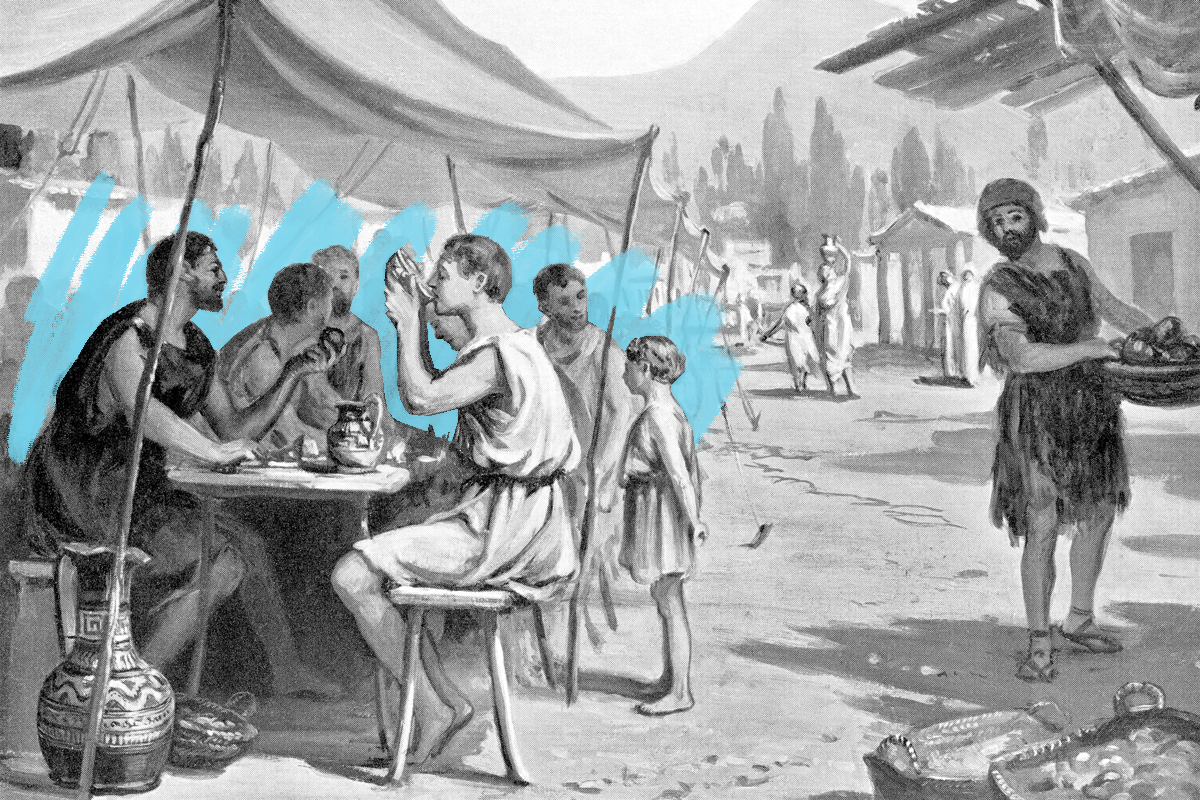The first napkins were made of soft dough.
The ancient Greeks unknowingly set the bar for environmentally friendly dining: The first napkins were edible pieces of soft dough, which were often fed to the dogs after a meal. Centuries before the widespread use of paper napkins, soft pieces of dough were cut into small pieces, rolled, and then kneaded at the table before being used to wipe people’s fingers and hands after eating. This dough was called apomagdalia, which refers to the doughy bread inside the crusts, also known as “the crumb.” Eventually, the practice evolved, and diners used sliced pieces of bread to clean their hands.
Since ancient Greeks ate with their hands, napkins of some sort were a necessity. At large banquets, towels and water were sometimes circulated among guests to tidy up between courses, but it wasn’t until the Romans began using cloths at mealtime that the modern napkin found its footing. A large cloth known as a mappa was draped over the body when reclining and eating, and guests would often bring their own to fill with food to take home as leftovers.
The first paper napkins emerged in ancient China around the second century CE, when small pieces of paper were folded into squares and fitted into the bottom of baskets that held teacups. The word “napkin,” meanwhile, originated in France: “Nappe” is the French word for “tablecloth,” while “kin” was added to the end to note its smaller size.







